History
A timeline of our efforts in sustainability
2019
- Pending – Juniper Hall (LEED Certified)
- Pending – Art Building (LEED Certified)
- October – Signing Climate Emergency Letter declaring Carbon Neutrality by 2050
- Commit towards increasing education to campuses and community outreach programs towards the fulfillment of two Sustainable Development Goals. Goal 4 which is to ensure inclusive and equitable quality education and promote lifelong learning opportunities for all along with Goal 13 which is to take urgent action to combat climate change and its impacts. This commitment shows the promises towards the fulfillment of education and climate change to create a better future for the planet and the people and organize more resources to research climate change and its creation.
- June – Child Development Center NMSU Grants (LEED Silver Certified)
- March – SB 489 – The Energy Transition Act
- New Mexico committing that it’s electricity will be 50% renewable by 2030, 80% by 2040 and 100% by 2045. This bill strengthens the build out of big renewable energy, along with local workforce to be training to supply the needed labor.
- January – EO 2019 – 003 Executive Order on Addressing Climate Change and Energy Waste Prevention
- New Mexico’s objective is to achieve a statewide reduction in greenhouse gas emissions of at least 45% by 2030 as compared to 2005 levels. Additionally New Mexico will support the 2015 Paris Agreement Goals by joining the U.S Climate Alliance. This addresses the need for climate change justification and energy waste prevention, and New Mexico’s chance to reduce pollution.
2018
- September – The beginning of NMSUCCESS (New Mexico State University Climate Change Education Seminar Series.
- A series that brings a range of experts to NMSU and venues in Las Cruces to have an informed discussion of the causes and significance of climate change.
- September – NMSU Career Closet
- Started to provide professional dress clothes at no cost, due to generous donations, to students who don’t have the finances to purchase professional dress clothes.
2017
Renew NMSU designated Bicycle Friendly University (Bronze)
- A Bicycle Friendly University shows that a university welcomes bicycling and provides infrastructure, education, and enforcement that encourages cycling.
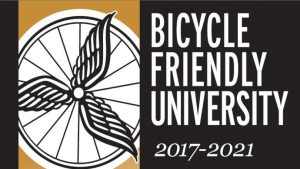
- January 26, 2017 – Received Gold rating on The Association for the Advancement of Sustainability in Higher Education (AASHE) The Sustainability Tracking, Assessment & Rating System (STARS)
- STARS is a transparent, self-reporting framework for colleges and universities to measure their sustainability performance by looking at academics, engagement, operations, and planning.
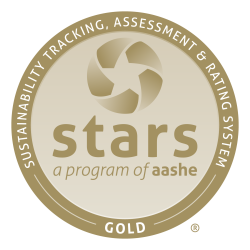
2016
- Hardman and Jacobs Undergraduate Learning Center (LEED Silver Certified)
2015
- $15 Million Energy Performance Contract
- First large scale Energy Performance Contract for the NMSU System designed to generate an avoided cost of $1.2 Million/year resulting in a 12.5 year ROI
2014
- DACC Sunland Park (LEED Silver Certified)
2013
- NMSU designated as Bicycle Friendly University
- American Indian Student Center (LEED Silver Certified)
- ASNMSU Center for the Arts (LEED Gold Certified)
- Barnes + Noble (LEED Gold Certified)
- DACC Hatch Center (LEED Silver Certified)
- East Mesa Phase 6/7 (LEED Silver Certified)
- Health and Social Services Annex (LEED Gold Certified)
2012
- Chilled Water Plant with Ice Storage
- Installation of chilled water equipment to keep pace with production needs for a growing campus. Ice storage capacity was included to augment electrical peak shaving capacilities.
- March 18, 2012 – Elkay donates a water-filling station in the NMSU Activity Center allowing the campus community the ability to refill reusable bottles instead of purchasing plastic water bottles.
- It has saved thousands of plastic bottles from going into the landfills, saves energy, and saves consumers fiances that they would have spent on bottled water. Supplied a source of filtered water to fill bottles at a rate of one gallon per minute which is faster than regular drinking fountains.
- October 24 – NMSU hosts its Campus Sustainability Day celebration.
- Throughout the day NMSU community took part in various events, including a tabling and educational session in the morning, a nationwide live webinar titled, “Educating Students for Climate Change” in the afternoon and in the campus-wide forum “Moving Toward Success” in the evening.
- November 30 – NMSU received a gold rating from AASHE on its 2012 STARS report.
- This was a significant leap from the 2011 report in which the university received a bronze rating. The NMSU environmental policy and sustainability manager, joni newcomer, spearheaded the STARS report effort with help from the Sustainability Council and volunteers from across campus.

- Addition to NMDA (LEED Gold Certified)
- Carlsbad Allied Health (LEED Silver Certified)
- Chamisa Phase II (LEED Gold Certified)
2011
- January 13, 2011 – NMSU adopts a Green Cleaning program
- The green cleaning objective calls for a switch to environmentally friendly cleaning products and equipment meant to improve campus health and appearance. As part of the move to green purchasing NMSU now uses Green Seal-certified paper products and cleaning chemicals.
- February 19, 2011 – Faculty Senate unanimously passes a Sustainability Memorial
- Led by Professor David Boje to recognize the new Office of Sustainability at NMSU and support the plans and goals of the Sustainability Council. Mentions that the university had committed itself to the American College, University Presidents Climate Commitment, the Talloires Agreement, and was required to act in accordance with them.
- September 7, 2011 – The Office of Sustainability completes the AASHE STARS report and NMSU receives a Bronze Rating for its sustainability efforts.
- STARS is a self-generated outline for universities/colleges to portion their sustainability progress. It creates a focus off of the report for sustainability advantage.
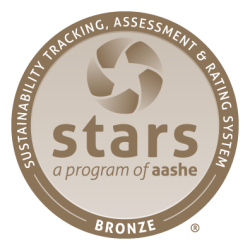
- Alamogordo Advanced Technology Center (LEED Gold Certified)
- DACC East Mesa Phase 5 (LEED Gold Certified)
- DACC Gadsden Center (LEED Gold Certified)
- Gardiner Hall (LEED Silver Certified)
2010
- January – NMSU joins the National Alliance for Advanced Biofuels
- A consortium of universities, national laboratories, and industry that was awarded $44 million by the U.S. Department of Energy to commercialize algae into a biofuel.
- July – Facilities and Services (FS) partially funds the position of Manager Environmental Policy and Sustainability with savings recouped from new efficiencies in operations.
- This position is responsible for developing policies and guidelines for protecting natural resources, reducing the University’s ecological footprint, and ensuring accountability for green building and low-impact development in NMSU’s ongoing capital improvement program. The Office of Sustainability is established to house the position.
- Football Coaches Office (LEED Silver Certified)
2009
- February – The Sustainability and Climate Change Task Force (SCCTF) is reorganized as the Sustainability Council.
- The goal of the Council meetings is to educate and inform on sustainability issues along with creating programs that will help NMSU manage its environmental impact.
- The College of Education (CoEd) Sustainability Committee is formed.
- Formed in Spring 2009 where it was NMSU Year of Sustainability Initiative. An annual event takes place each year to focus on the aspects of going green.
- NMSU’s first LEED-certified building – Health Sciences Center on Alamogordo DACC
- Interim President Waded Cruzado – Salas declares 2009 the Year of Sustainability and signed Talloires Declaration of the Association of University Leaders for a Sustainable Future.
- The Talloires Declaration is a ten-point action plan for incorporating sustainability and environmental literacy in teaching, research, operations, and outreach at colleges and universities. Universities have a major role in the education, research, policy formation, and information. It has been signed by over 500 universities in over 50 countries.
- Alamogordo Health Sciences Center (LEED Gold Certified)
2008
- Smart Meter Implementation
- Initiative to install communicating sub-meters with supported a better understanding of energy use at the building level.
- NMSU participates in the annual RecycleMania competition for the first time, placing fifth in the Grand-Champion Division.
- A way for students to get involved with sustainability efforts and reduces waste, lowers schools environmental footprint, and creates attention to expand recycling efforts. NMSU is a yearly participant to help meet the American College and University Presidents Climate Commitment.
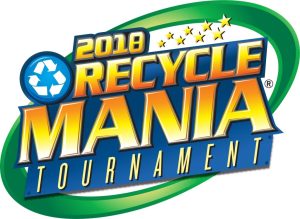
2007
- April – NMSU President Michael Martin signs the American College and University Presidents Climate Commitment (ACUPCC)
- Agreed to neutralize all of the university’s global warming emissions and accelerate research and educational efforts to help stabilize the earth’s climate. While promoting the research and educational efforts of higher education to speed up society’s progress toward climate sustainability.
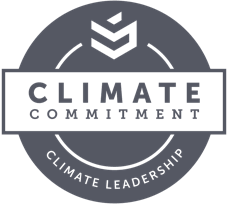
- The Climate Action Plan was written.
- In April 2007 NMSU President Michael Martin signed the American College and University Presidents’ Climate Commitment. This initiates that NMSU will develop a plan to become climate neutral.
- The Energy Task Force is re-established as the Sustainability and Climate Change Task Force (SCCTF)
- To eliminate net greenhouse gas emission that needs immediate attention. NMSU is to make climate neutrality and sustainability a part of the
curriculum.
- To eliminate net greenhouse gas emission that needs immediate attention. NMSU is to make climate neutrality and sustainability a part of the
2006
- Campus Health 15 kW PV System
- Installation of the first non-research based PV system which serves as a parking shade structure.
- Niagara Energy Management System
- Conversation of the existing legacy BAS to the Niagara open protocol platform allowing integration of HVAC, Lighting and Metering systems.
- The Institute for Energy and the Environment (IEE)
- An institute within the New Mexico State University College of Engineering, created when three programs (WERC): A Consortium for Environmental Education and Technology Development, the Southwest Technology Development Institute (SWTDI), and the Carlsbad Environmental Monitoring and Research Center (CEMRC) are combined. The Institute is developed to address issues related to energy and the environment. IEE will apply the strengths WERC has in the environment, the assets SWTDI has in energy, and combine associate them with the strengths that CEMERC has in nuclear waste-management thus creating information providing leverage for new developments in energy.
- EO 2006-001 State of New Mexico Energy Efficient Green Building Standards for State Buildings
- Develop recommendations to ensure the U.S. Green Building Council’s LEED rating system. While improving the health of its citizens by the production of clean sources such as energy, saving water, and reduction of waste.
2004
- NMSU President Michael V. Martin establishes The Sustainability and Climate Change Task Force headed by Robert Moulton.
- To deal with rising energy prices and climate commitment and to take action in developing a sustainable future.
2001
- Electric Chiller Replacement – Removal of the original 1960’s electric chillers and replaced with high efficiency units.
1995
- Cogeneration Plant – Construction of a combined heat and power plant as a strategic move to offset the $0.24/kWh energy costs
1991
- WERC established
- WERC is a student Environmental Design Contest where the winner is awarded over $25k in cash prizes for their solution to engineering tasks posed by industry partners and government agencies. Students use teamwork skills while solving real-world problems. Their solutions are judged by engineering professionals through research papers, oral presentations, and demonstrations.
1988
- Building Automation System (BAS) Upgrades
- Expansion of HVAC controls within the building system that incorporated operational capabilities. Buildings only had system monitor capabilities prior to this enhancement initiative
1985
- Chilled Water Thermal Storage
- Three million gallon storage facility to assist in electrical peak shavings and hydraulic balance for the campus chilled water distribution system.
1982
- Jornada Basin Long Term Ecological Research – NMSU land is part of the Jornada Basin.
- This research examines the causes and consequences of desertification. LTER at NMSU is one of 25 sites funded by the NSF and researchers come from all over the world to participate. Process interest included patch-scale contagion, landscape context, and time lags that are nonlinear dynamics and threshold behavior.
1981
- Energy Management System
- Implementation of a centralized SCADA that was comprised of an analog modem connected system used to monitor temperature information from the chilled water distribution.
- Geothermal Well Sites
- Project to extract geothermal energy from well sites located east of campus for transfer to other properties owned by NMSU. This energy was used to provide heating for comfort systems, portable water, swimming polls, greenhouse and animal research.
1979
- Energy Research Institute (Engineering Complex I)
- Solar Thermal Panels designed to explore Thermal Storage capabilities utilizing solid mass.
1978
- Passive Solar Building. Currently on Geothermal Drive near Las Alturas Loop. (General Council)
1977
- The Southwest Technology Development Institute (SWTDI), a non-profit university-based organization is established
- Providing applied research and development services to private and public sector clients. Provides contract engineering services for systems analysis and hardware development.
1976
- Collins Casa Del Sol (Roof Pond House) – Was located next to Passive Solar Building and later demolished. Experimental residence exploring heat balance solutions related to structural solar gains and the ability to solve heating and cooling simultaneously.
1963
- The NM Water Resources Researchers Institute (WRRI) was established by the New Mexico legislature and approved under the 1964 federal Water Resources Research Act.
- The institute funds research conducted by faculty and students from universities across the state to address water problems critical to New Mexico and the Southwest. It strives to work through water problems and supply high-quality water for future generations.